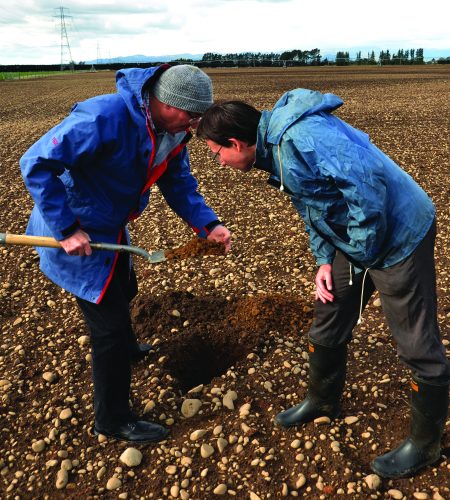Dr Liang Wang
Project Leader
University of Newcastle
Farmers need on farm information on soil chemical properties that can affect crop performance. However, the cost and time required for traditional soil sampling and chemical analyses are uneconomical for use in precision agriculture. This has led to the widespread interest in the development of real-time soil sensing systems.
This project will develop an affordable field-based tool kit for farmers to quickly determine soil chemical properties on their farm. It will develop a user friendly mobile and desktop interface which will access the measurement data, and provide crucial soil nutrient information for the users.
The project will evaluate potential technologies for the rapid determination of soil chemical properties, and present the best solution for rapid in-field chemical soil measurements focusing on soil nutrient status. Training courses and workshops will be offered to farmers to share the research outcomes and promote the rapid testing tool kit.
Several of the most promising technologies for rapid field measurement are radiometric and spectroscopic methods. These methods require the acquisition of sophisticated instruments and software to process the spectral data, which are unaffordable for most farmers.
Soil chemical indicators can be rapidly measured using colorimetric reagents, which is simpler and more affordable. However this method is not always accurate and needs to be modified to provide more precise measurement results.
This project will develop a disposal and affordable device which can simultaneously determine multiple soil key chemical indicators in the field. To do this, we will investigate an application of colorimetric methods in a 3D printed microfluidic device. By using this device, soil solutions can be measured directly in the field with a mobile phone, without sample preparations like other on-site analysis methods.
The device will be cost effective and environmental friendly, which will translate to an easy on-site analysis tool. Here, we will embed colorimetric reagents into the device to quantify the target soil nutrients in samples, so it can greatly simplify the whole analysis process and achieve sample-in/answer-out analysis.
Using 3D printing, we can integrate the functional parts into the microfluidic device that can mitigate the reliance of the sample preparation process and the use of external components. An additional advantage of 3D printing is that once the design has been finalised, we will be able to scale production to manufacture several hundreds of units a week, making it easy to perform a full field validation of the design and its use.

